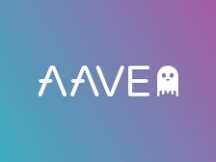蝴蝶矿机(BFL ASIC)持续发货中 Jalapeno率先发货

蝴蝶实验室经过近半年的拖延,这似乎是一个他们期待已久的ASIC挖掘产品的最终版本终于发布了一份。阿瓦隆如何先运采矿钻机一份样本Bitcoin的开发者杰夫Garzik类似蝴蝶实验室推出了他们的第一单元大卫佩里在我的睡眠中的编码。大卫接到单位周六晚上,他拆箱和测试当天上传的视频。
问题是一个单位Bitforce SC辣椒,公司是销售的四款车型中最小的,它完美运行,以最小的安装和连接采矿池一贯摇出4.5-5.7 GH /秒,15内出现%,其操作规范。然而,除了从哈希率统计几乎没有辜负公司原本答应。该设备是大致10x10x8厘米大小,高约3倍,比原先设想的辣椒的相对平坦的设计 - 名称本身来自机器的想法,可作为咖啡机,套。事实上,公司已经悄悄放弃辣椒的名称,其产品从这款低端版本,而宁愿使用更世俗的“5 GH / s的比特币矿工”。但是,该设备仍然比它的主要竞争对手更好一些:Avalon的矿工提供65 GH / 620 W,或约10.5 W每GH /秒相比,蝴蝶Labs的6,并安装到一台台式电脑的空间 - 蝴蝶实验室可以把一个空间到120 GH / s的墨西哥辣椒。
该器件的功耗为30瓦,给予效率6焦耳每gigahash(GH /秒或6瓦每两个单位都是一样的),6倍,高于公司原先承诺的。然而,对于那些已挖掘新闻,这是不奇怪的。阿瓦隆首次发布了他们的矿工一月,创始人逸夫郭在接受记者采访时说:“他们声称,他们不会达到的功耗。最近他们改变它1.2瓦特,,但他们不会甚至达到。“Avalon的自己当时的模拟显示,即使蝴蝶实验室的卓越的65纳米制造工艺精度,它只会是可能达到约3W每GH /秒。当时,许多人(包括我自己在内)批评阿瓦隆为他们的电源效率和尺寸方面的劣势数字,但现在真相已经很清楚:阿瓦隆仅仅是现实。
蝴蝶实验室工作人员在2月和3月,他们的论坛上告知客户,他们有保持其功耗目标的问题,并开始在四月Bitcoin的开发商卢克Dashjr公开证实,有蝴蝶实验室工作的ASIC,但机器是费时180瓦生产只有25 GH /秒。该设备是不是相当的生产质量,有人认为,也许它的工作效率低下,因为它是有缺陷的,但在这一点上,它成为每个人都清楚1.2W许多个月来仍然是一个白日梦。 GH /秒,“辣椒”的6 W凭借其电流效率仍然也许稍微比Avalon的矿工更有效的,但不是很多。
30瓦是仍然没有一个非常高的电力支出,额外的25瓦给出了0.6千瓦时,或约$ 0.10每一天的开支 - 微薄的$ 29.52每天(5 GH /每矿工Ş/ 75000 GH / s的总的网络hashrate *每块25 BTC * 144块,每天$ 123每比特币)的利润,目前,该设备可以生产。但它仍然是一个严重的不便的原因有两个。首先,蝴蝶Labs的原意相反,该设备将无法运行在USB很快。其次,更重要的是,假设较大的单位都会有类似的功率输出比,在公寓的人都会有困难,供电单SCS或一个MiniRig(目前预计为10千瓦),这意味着这些买家将需要大量拿出另作安排运行自己的机器。
幸运的是,蝴蝶实验室提供的只是:在最近的更新问题,该公司写道:“蝴蝶实验室订购设备时,您可以选择本地托管您的设备与我们的分支机构的数据中心之一。采矿场将被添加到您的主办单位,您将得到定期支付基于他们的集体输出。“有意思的是蝴蝶实验室和其的竞争对手ASICMiner,采取两种完全不同的路径,现在已经看到了自己的商业模式收敛到同一个蝴蝶实验室,最初只销售机,现在提供什么本质上是投资产品,ASICMiner的,原本出售股份,现在也卖得机。蝴蝶实验室公布对于那些关心Bitcoin的网络集中,是非常不幸的,因为Bitcoin的网络的一个重要部分最终将总部设在同一个地方,但ASICMiner相反的公告抵消坏消息。
到目前为止,只有辣椒已经公开发布给任何人,所以它仍然可以看出,正是蝴蝶实验室将做较大的单位。乔希Zerlan已说,将可能是约两倍大,原来的10厘米的立方体设计和稍宽,并表示在一个公共的更新,“显然无法适应minirig在1.5 TH / s的中等规模的单打我们计划的大小,但我们有一些有趣的解决方案方面,“但只是还没有更具体的答案不可。幸运的是,它出现,Bitcoin的矿业公司,我们一直在等待这么长的时间,现在这些问题的最后阶段,所以Bitcoin的挖掘景观将继续是有趣多月来观看。

蝴蝶小辣椒图
原文:
After nearly six months of delays, Butterfly Labs has finally released a copy of what appears to be the final version of one of their long-awaited ASIC mining products. Similarly to how Avalon first shipped a sample copy of their mining rig to Bitcoin developer Jeff Garzik, Butterfly Labs shipped their first unit to David Perry of Coding in My Sleep. David received the unit Saturday evening, and uploaded a video of himself unboxing and testing it the same day.
The unit in question is a Bitforce SC Jalapeno, the smallest of the four models that the company is selling, and it appears to be running flawlessly, connecting to mining pools with minimal setup and consistently cranking out 4.5-5.7 GH/s, within fifteen percent of its operating specifications. However, aside from the hash rate the statistics do not nearly live up to what the company had originally promised. The device is roughly 10x10x8 cm in size, about three times higher than the relatively flat design that had originally been conceived for the Jalapeno – the name itself coming from the idea that the machine could be used as a coffee warmer. In fact, the company has now quietly dropped the Jalapeno name from this low-end version of its product, preferring instead to use the more mundane “5 GH/s Bitcoin Miner”. However, the device is still somewhat better than those of its chief competitor: Avalon’s miner offers 65 GH/s for 620 W , or about 10.5 W per GH/s compared to Butterfly Labs’ six, and fits into the space of a desktop computer – a space into which Butterfly Labs can put 120 GH/s worth of its Jalapenos.
The device’s power consumption is 30 watts, giving an efficiency of 6 joules per gigahash (or 6 watts per GH/s; the two units are the same), six times higher than what the company originally promised. However, for those who have been following mining news, this is not surprising. When Avalon first released their miners in January, founder Yifu Guo had said in an interview: “They won’t reach the power consumption they were claiming. Recently they changed it to 1.2w, but they won’t even reach that.” Avalon’s own simulations at the time showed that even with Butterfly Labs’ superior 65-nanometer precision manufacturing process it would only be possible to reach about 3W per GH/s. At the time, many (including myself) criticized Avalon for their inferior figures with regard to both power efficiency and size, but now the truth has become clear: Avalon was simply being realistic.
In February and March, Butterfly Labs staff informed customers on their forums that they were having problems keeping to their power consumption targets, and at the beginning of April Bitcoin developer Luke Dashjr publicly confirmed that Butterfly Labs had a working ASIC, but the machine was consuming 180 W to produce only 25 GH/s. The device was not quite production-quality, and some argued that perhaps it was working so inefficiently because it was defective, but at that point it became clear to everyone that 1.2W would remain a pipe dream for many months to come. With its current efficiency of 6 W per GH/s, the “Jalapeno” remains perhaps slightly more efficient than Avalon’s miners, but not by much.
Thirty watts is still not a very high power expenditure; the extra 25 watts gives an expenditure of 0.6 kWh, or about $0.10 per day – a pittance compared to the $29.52 per day (that’s 5 GH/s per miner / 75000 GH/s total network hashrate * 25 BTC per block * 144 blocks per day * $123 per bitcoin) of profit that the device can currently produce. But it is nevertheless a serious inconvenience for two reasons. First of all, contrary to Butterfly Labs’ original intent, the device won’t be running off a USB anytime soon. Second, and more importantly, assuming that larger units will have a similar power to output ratio, people in apartments will have difficulty powering large numbers of Single SCs or a MiniRig (now expected to be 10 kW), meaning that those buyers will need to come up with alternative arrangements to run their machines.
Fortunately, Butterfly Labs has provided just that: in a recent FAQ update, the company wrote: “When ordering equipment from Butterfly Labs, you have the option of hosting your equipment locally with one of our affiliate data centers. Your hosted units will be added to a mining farm and you will be paid out regularly based on their collective output.” What is interesting is that Butterfly Labs and its competitor ASICMiner, taking two completely different paths, have now seen their business models converge to one and the same: Butterfly Labs, initially only selling machines, is now offering what is essentially an investment product, and ASICMiner, originally selling shares, is now also selling machines. For those concerned about Bitcoin network centralization, Butterfly Labs’ announcement is very unfortunate, as a significant fraction of the Bitcoin network will end up headquartered in one place, but ASICMiner’s opposite announcement counteracts the bad news.
So far, only the Jalapeno has been publicly released to anyone, so it still remains to be seen exactly what Butterfly Labs will do with their larger units. Josh Zerlan has said that the medium-size Singles will likely be about twice as large as the original ten-centimeter cube design and slightly wider, and stated in a public update that “obviously the minirig can’t fit 1.5 TH/s in a case the size of what we were planning, but we have some interesting solutions with regards to that,” but more specific answers are not available just yet. Fortunately, it appears that the Bitcoin mining company that we have been waiting on for so long is now in the final stages of working out these problems, so the Bitcoin mining landscape will continue to be interesting to watch for many months to come.

微信扫描关注公众号,及时掌握新动向
2.本文版权归属原作所有,仅代表作者本人观点,不代表比特范的观点或立场
2.本文版权归属原作所有,仅代表作者本人观点,不代表比特范的观点或立场


























